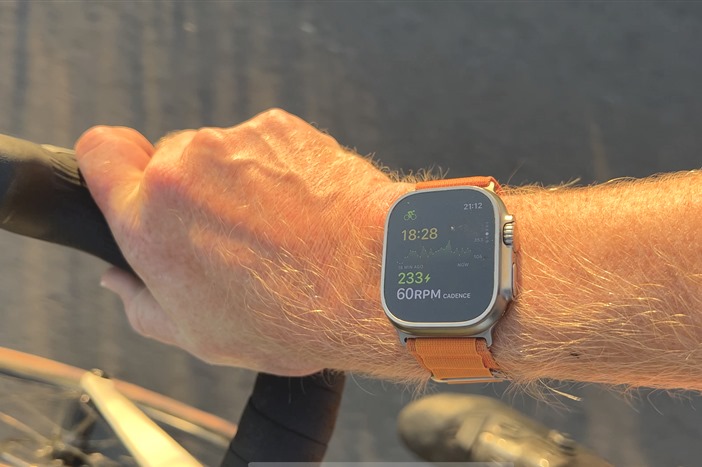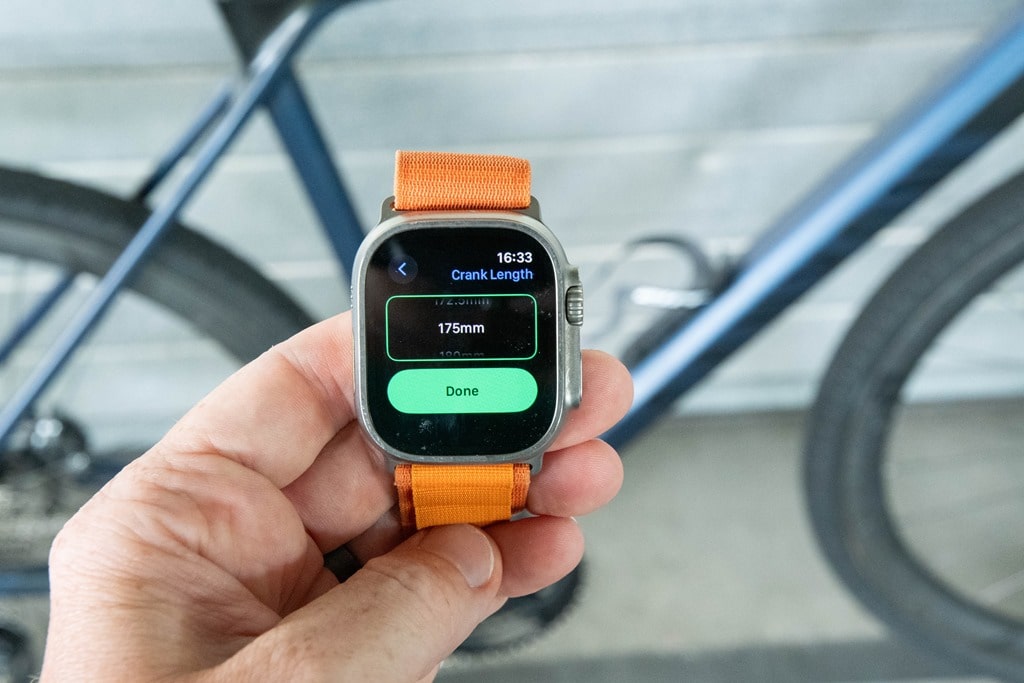
Apple packed watchOS 9 with advanced run tracking features for Apple Watch runners. watchOS 10 brings that same level of emphasis to cycling workouts on Apple Watch.
The easiest way to appreciate watchOS 10 and iOS 17 during a cycling workout is with Live Activities. Both software updates work together to turn the iPhone into a dedicated display for all your cycling metrics. From Apple’s announcement this summer:
When a cycling workout is started from Apple Watch in watchOS 10, it will automatically show up as a Live Activity on iPhone and, when tapped, will utilize the full screen. Workout Views, such as Heart Rate Zones, Elevation, Race Route, Custom Workouts, and a new Cycling Speed view, have been optimized for the display size of iPhone, which can be mounted to a bike for convenient, easy viewing during a ride.
We took a tour of the new feature earlier this month. See for yourself here.
Another major move for Apple Watch cyclists is automatic Bluetooth cycling accessory support:
Apple Watch can now automatically connect to Bluetooth-enabled cycling accessories, such as power meters, speed sensors, and cadence sensors. This enables brand-new metrics, including cycling power (watts) and cadence (RPM), and additional Workout Views, including Power Zones. Bluetooth connection is supported for Indoor and Outdoor cycling workouts, as well as GymKit.
Apple developed new algorithms that leverage the combination of Apple Watch sensor data and Bluetooth power meters to “estimate Functional Threshold Power (FTP), the highest level of cycling intensity that a rider could theoretically maintain for an hour,” says Apple.
“Using FTP, Apple Watch calculates personalized Power Zones, used to easily see the current zone and track how long is spent in each, which is an effective and popular way of improving performance.”
Naturally, the awesome Apple Watch workout blogger DC Rainmaker, who calls pairing Bluetooth power meters to Apple Watch “silly easy”, has already taken these new watchOS 10 power cycling features for a spin.
In the piece, DC Rainmaker walks you step-by-step through the process of pairing a power meter, preparing the Workout app for displaying the new metrics, and how the new-to-Apple Watch data points are used.

The article also includes a few quotes from Apple’s fitness guru Jay Blahnik, who talks about what pushed Apple to adopt power cycling features in watchOS 10:
This year we put a big focus on cycling. We’ve gotten feedback for years that folks would like to be able to connect their accessories to the watch. And we also thought this is a really great opportunity to have the phone play a role. So we’re really excited about where we’ve started, but I would say ‘watch this space’, we’re just as excited about what’s coming in the future.
Give it a read this weekend if you’re at all curious about what’s up with the Apple Watch and cycling workouts in watchOS 10.
FTC: We use income earning auto affiliate links. More.




Comments